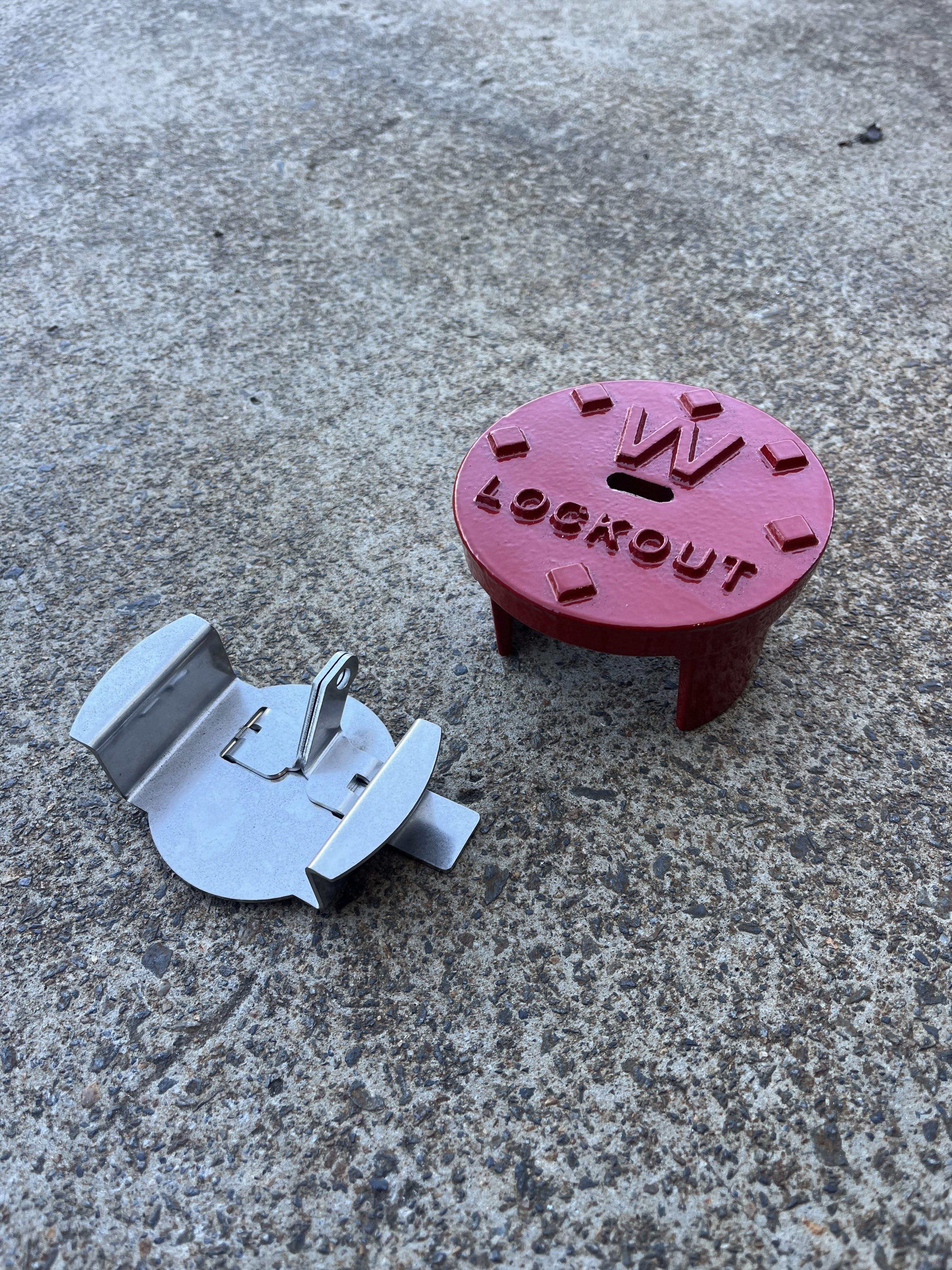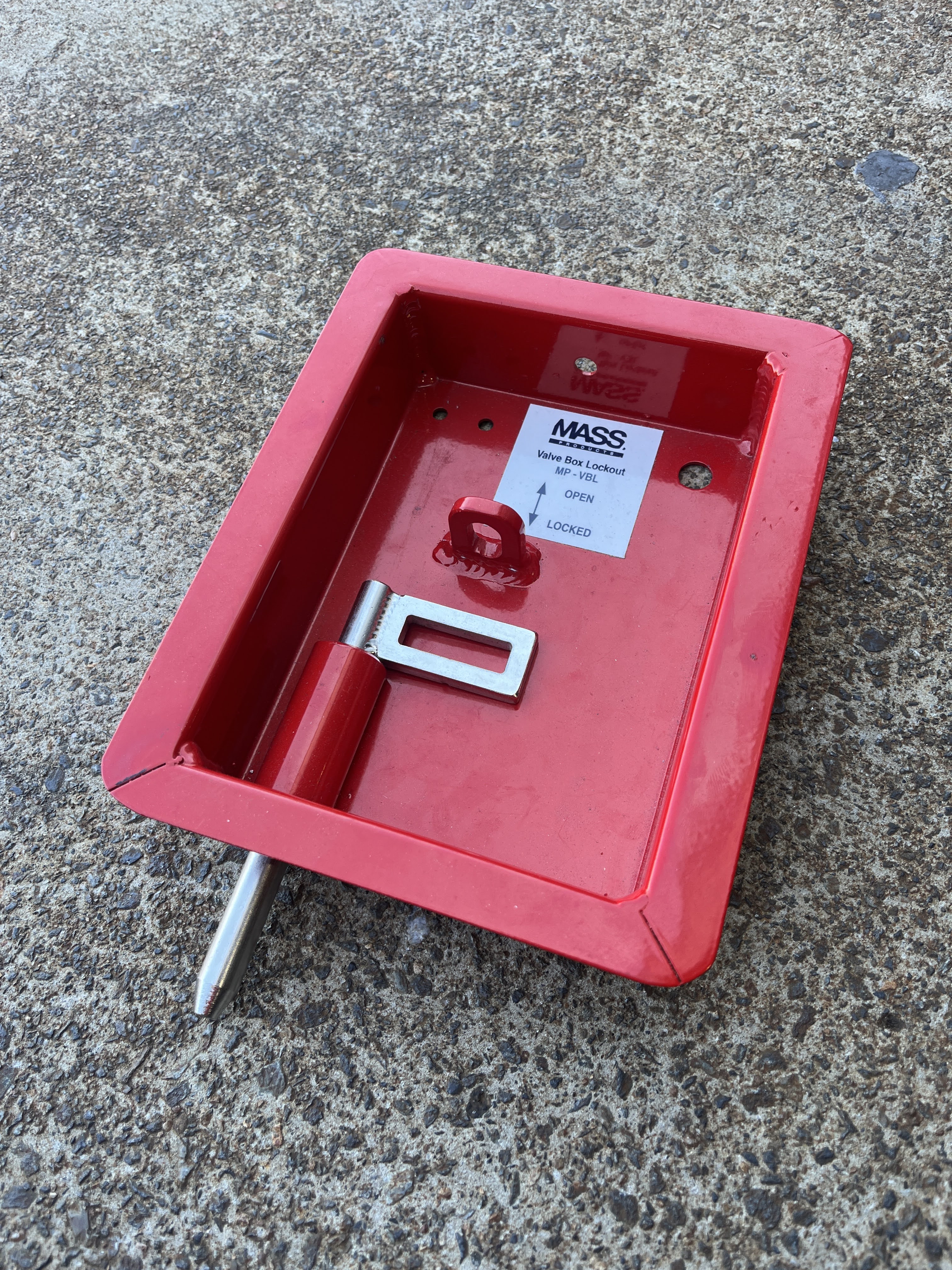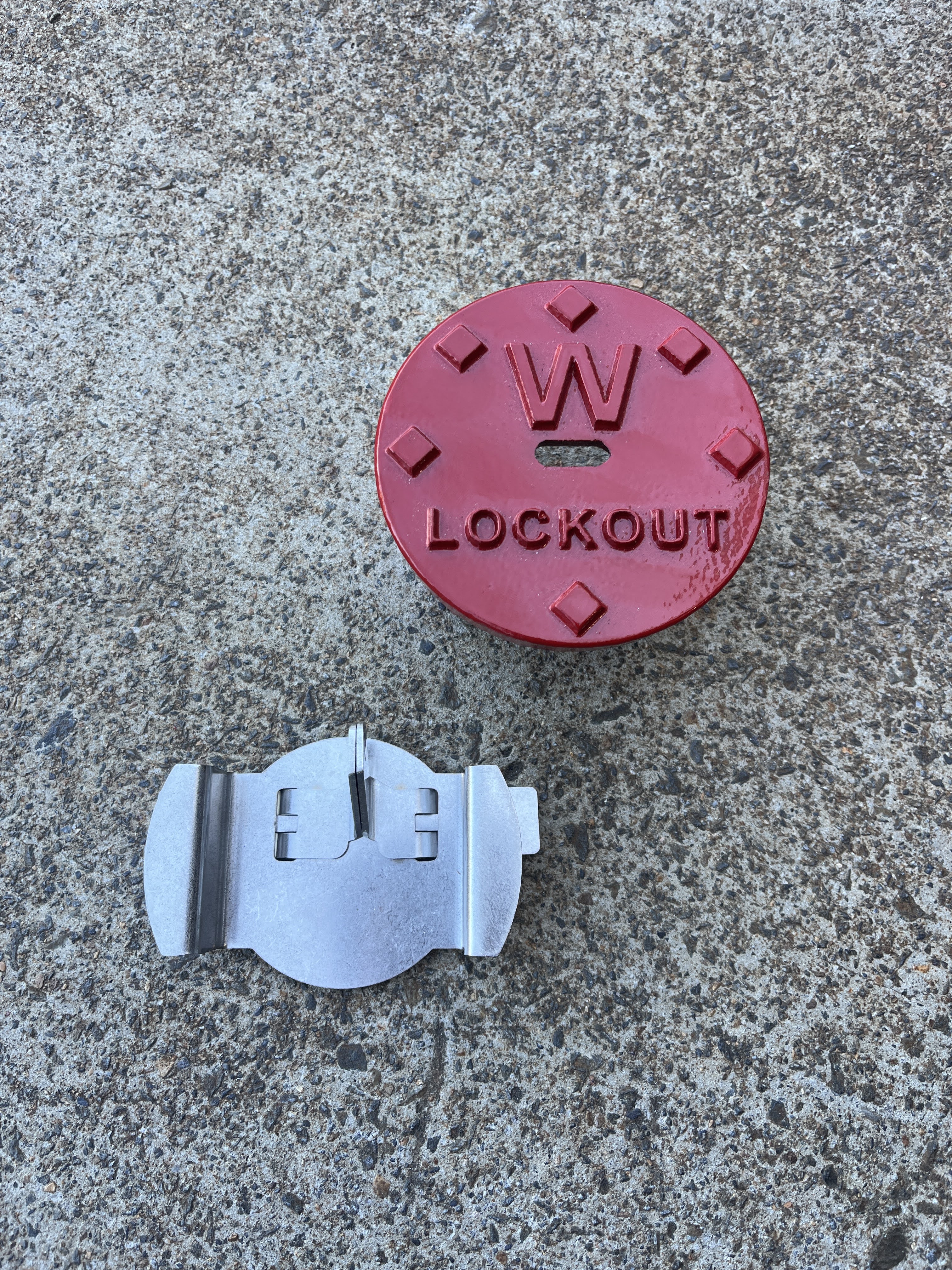1<script>
2{
3 "@context": "https://schema.org",
4 "@type": "FAQPage",
5 "mainEntity": [
6 {
7 "@type": "Question",
8 "name": "Why not just rely on operational procedures instead of devices?",
9 "acceptedAnswer": {
10 "@type": "Answer",
11 "text": "Operational procedures, staff training, and signage are absolutely essential, but they depend on perfect human compliance every single time. Fatigue, turnover, or simple oversight can still lead to unauthorised valve operation. Engineered valve lockout devices add a physical layer of protection that does not rely on memory, vigilance, or perfect procedure adherence. They prevent untrained or unauthorised personnel from simply walking up and turning a valve, serve as a visual reminder that this is a controlled asset, deterring casual tampering, and complement procedural controls by providing a redundant safety measure. In short, procedures manage people, devices manage risk."
12 }
13 },
14 {
15 "@type": "Question",
16 "name": "Will installing lockouts slow down emergency response?",
17 "acceptedAnswer": {
18 "@type": "Answer",
19 "text": "No, in fact, they often streamline it. Modern engineered lockout devices are designed with operational speed in mind. Single-key or coded systems allow authorised operators to gain access in seconds, standardised designs ensure crews know exactly how each lockout works, reducing confusion, and centralised key control enables dispatch to quickly identify which keys or codes are needed. Far from creating delays, lockouts provide confidence that if a valve is operated during an incident, it was done by the right person, under authorisation, and will be logged for post-event reporting."
20 }
21 },
22 {
23 "@type": "Question",
24 "name": "Can these devices be retrofitted to existing valves?",
25 "acceptedAnswer": {
26 "@type": "Answer",
27 "text": "Yes, most modern solutions are designed with retrofit installation in mind, meaning no major excavation or network shutdown is usually required. Devices can be fitted during routine maintenance cycles or as part of SAMP implementation. Modular designs allow for future upgrades, key system changes, or integration with smart monitoring. This makes upgrading to a secure network a scalable project rather than a disruptive overhaul."
28 }
29 },
30 {
31 "@type": "Question",
32 "name": "How do these devices integrate with a Safe Access & Maintenance Program (SAMP)?",
33 "acceptedAnswer": {
34 "@type": "Answer",
35 "text": "When combined with a structured SAMP program, lockout devices become part of a closed-loop safety system: identify high-risk valves, install appropriate Valve Lockout Devices, track and log every authorised access event, and audit and improve security measures over time. This integration turns an individual device into part of a network-wide strategy for tamper prevention and service continuity."
36 }
37 }
38 ]
39}
40</script>Valve Isolation Security: From Lock-outs to Tamper-Resistant Systems
Keeping potable water networks secure isn’t just about preventing contamination. It’s about protecting community health, safeguarding infrastructure, and maintaining service continuity. When a valve is accidentally or maliciously tampered with, the consequences can cascade: from water outages to pressure surges, from contamination risks to costly emergency call-outs.


In this article, we explore how modern engineered lockout devices and tamper-resistant systems create robust incident barriers, and why investing in valve security pays dividends for both safety and service continuity.
The Incident Pathway: Why Valve Security Matters
In water network operations, incidents rarely happen by chance. They follow a predictable pathway of opportunity, access, and action, and understanding this pathway is the first step to breaking it.
When utilities ignore the pathway, they leave room for accidental or deliberate valve operations that can disrupt service, damage assets, or compromise water quality.

Step 1: Opportunity - Exposure to Risk
Many valves are installed in areas that are:
- Publicly accessible: Roadside pits, footpaths, and parklands are common valve locations.
- Unmonitored: Lack of surveillance or barriers means anyone can approach without being challenged.
- Unmarked or poorly documented: Field crews may be unaware of which valves are critical.
Opportunity is the first weak point, and without mitigation, it invites tampering or mistakes.
Step 2: Access - Ease of Operation
Valves are designed to be operable for maintenance, but this also means they can be easily manipulated if not secured.
- Standard tools: A simple T-key or shifter can open many network valves.
- No physical deterrent: Without a lockout or guard, there’s nothing stopping an untrained individual from operating it.
- Shared knowledge: Contractors, ex-employees, or the public may know where valves are located and how to operate them.

Step 3: Action - The Incident Itself
Once opportunity and access align, all it takes is an action, sometimes malicious, sometimes accidental, to trigger a chain reaction:
- Deliberate tampering: Closing a valve to disrupt service or damage infrastructure.
- Theft of service: Opening hydrants or bypass valves to illegally draw water.
- Accidental operation: Well-meaning workers or members of the public turning a valve without understanding the network impact.
Example Scenario: Real-World Consequences
Imagine a critical potable water main serving thousands of homes. If an unauthorised individual closes a valve:
- Downstream pressure drops almost instantly.
- SCADA alarms trigger, and crews must investigate and respond.
- Water quality may be compromised, requiring flushing and testing.
- Public alerts (such as boil water notices) may be issued, impacting community confidence.
- Operational costs rise, with overtime labour, compliance reporting, and potential penalties.
From Lockouts to Tamper-Resistant Systems
Valve security has undergone a significant transformation in the past decade. As networks have grown more complex and customer expectations for uninterrupted service have risen, utilities have realised that simple padlocks and chains are no longer enough.
The Evolution of Valve Protection
Historically, utilities relied on basic lockouts; a padlock, a chain, sometimes a simple cover, to keep valves from being accidentally operated. While these solutions served their purpose in low-risk, low-traffic areas, they also introduced new challenges:
- Corrosion & Maintenance:
Padlocks exposed to weather quickly rust or seize, making them hard to operate when you need them most. Field crews often find themselves forced to cut the lock, delaying critical maintenance. - Limited Control & Accountability:
Keys can be lost, duplicated, or even taken by departing contractors. With no centralised tracking, it’s difficult to know who has access or when a valve was last operated. - Bypass Risk:
Chains and simple padlocks are vulnerable to cutting tools, leaving critical infrastructure open to tampering. - Human Factor:
Without a standardised approach, crews may improvise different lockout methods across the network, leading to inconsistent security levels.
As utilities began experiencing higher service demands, increased regulation, and more frequent malicious tampering incidents, the need for a more robust and auditable solution became clear.
The Rise of Engineered, Tamper-Resistant Solutions
Modern utilities now favour purpose-built engineered lockout systems designed specifically for water industry conditions. These solutions go far beyond “locking the valve”, they are engineered to withstand tampering, environmental stress, and provide secure, traceable access control.
Benefits of Engineered Lockout Devices
Engineered devices deliver measurable improvements in safety, network integrity, and operational efficiency.
- Tamper-Resistance:
Built with hardened materials and proprietary designs, these devices resist cutting, drilling, and brute-force removal. - Controlled Access:
Modern systems use centralised key management, unique key profiles, or coded access systems to ensure only authorised personnel can operate the valve, with full traceability. - Standardisation Across Assets:
One device type can often fit multiple valve sizes and configurations, simplifying procurement, training, and stock management. - Compliance & Auditability:
Many systems integrate with asset management software, allowing you to log every access event for regulatory compliance and internal reporting.
Enhancing Service Continuity
The shift to engineered systems isn’t just about security, it’s about protecting the continuity of service that communities depend on.
- Preventing Accidental Closures:
During public events, construction projects, or maintenance work, secure valves prevent accidental shutoffs that could disrupt service. - Reducing Emergency Callouts:
Fewer unauthorised operations mean fewer reactive jobs, fewer SCADA alarms, and lower operational costs. - Enabling Planned, Traceable Access:
When valves must be operated, authorised personnel can do so quickly, safely, and with a record of who accessed the asset, supporting network transparency and incident investigation.
The Role of Programs like SAMP
A Safe Access & Maintenance Program (SAMP) is our long-term partnership model with asset owners/operators. We onboard your relevant assets into our database and help you steadily improve safe access over time, through scheduled audits, upgrades, and design-engineering recommendations focused on operator safety and compliance.
Importantly, SAMP is not a network operations tool and does not determine hydraulics, valve placement, or isolation strategies. Instead, it tracks and supports the adoption and upkeep of engineered safe-access controls (e.g., access covers with safety grates, handrails, fall-prevention, and valve lockout devices) across your sites.
Why SAMP Matters
- Asset visibility & cadence
Keep a clear, living register of safe-access assets (by site), with recurring audit schedules and remediation logs. - Risk-led upgrades (safety first)
Prioritise upgrades that reduce manual-handling risk and fall-from-height exposure (e.g., lighter covers, integrated safety grates, compliant handrails), not network reconfiguration. - Compliance documentation
Maintain evidence packs (photos, specs, certificates, inspection reports) that simplify internal reviews and external audits. - Lifecycle planning
Budget and plan replacements, retrofits, and inspections for engineered controls (including VLDs) so they remain effective and serviceable.
How SAMP & Valve Lockout Devices Work Together
- Select a fit-for-purpose device
When a site risk assessment points to unauthorised or accidental operation as a safety exposure, we specify a Valve Lockout Device from our catalogue as a physical control. - Deploy and record
Mass Products supplies/installs the device and records the asset ID, location, photos, and spec in your SAMP register for future reference and maintenance. - Inspect and maintain
SAMP schedules periodic checks (corrosion, fasteners, seals, operability) and logs any corrective actions so the device continues to perform as intended.
FAQs
Why not just rely on operational procedures instead of devices?
Operational procedures, staff training, and signage are absolutely essential, but they depend on perfect human compliance every single time. Fatigue, turnover, or simple oversight can still lead to unauthorised valve operation.
Engineered valve lockout devices add a physical layer of protection that does not rely on memory, vigilance, or perfect procedure adherence. They:
- Prevent untrained or unauthorised personnel from simply walking up and turning a valve.
- Serve as a visual reminder that this is a controlled asset, deterring casual tampering.
- Complement your procedural controls, giving you a redundant safety measure.
In short, procedures manage people, devices manage risk.
Will installing lockouts slow down emergency response?
No, in fact, they often streamline it. Modern engineered lockout devices are designed with operational speed in mind.
- Single-key or coded systems: Authorised operators can gain access in seconds.
- Standardised designs: Crews know exactly how each lockout works, reducing confusion.
- Centralised key control: Dispatch can quickly identify which keys or codes are needed, preventing wasted time searching.
Far from creating delays, lockouts give you the confidence that if a valve is operated during an incident, it was done by the right person, under authorisation, and will be logged for post-event reporting.
Can these devices be retrofitted to existing valves?
Yes, most modern solutions are designed with retrofit installation in mind, meaning:
- No major excavation or network shutdown is usually required.
- Devices can be fitted during routine maintenance cycles or as part of SAMP implementation.
- Modular designs allow for future upgrades, key system changes, or integration with smart monitoring.
This makes upgrading to a secure network a scalable project rather than a disruptive overhaul.
How do these devices integrate with a Safe Access & Maintenance Program (SAMP)?
When combined with a structured SAMP program, lockout devices become part of a closed-loop safety system:
- Identify high-risk valves.
- Install appropriate Valve Lockout Devices.
- Track & log every authorised access event.
- Audit & improve security measures over time.
This integration turns an individual device into part of a network-wide strategy for tamper prevention and service continuity.
Summary
Valve isolation security has moved far beyond improvised padlocks and chains. Today, water utilities are expected to deploy engineered, tamper-resistant lockout systems as part of a layered protection strategy.
These systems don’t just protect valves, they protect:
- Public health: by preventing accidental or malicious contamination events.
- Service continuity: by reducing outages, pressure drops, and emergency responses.
- Operational efficiency: by giving crews controlled, traceable, and standardised access.
- Regulatory compliance: by providing documented proof of risk management.
When paired with a structured Safe Access & Maintenance Program (SAMP), these devices transform valve security from a reactive task into a proactive risk management strategy.
Key Takeaway:
Break the incident pathway before it starts, secure your network with Valve Lockout Devices and embed them into your SAMP for a safer, more resilient water system.

Visit our office

Gold Coast, QLD Australia
Mass Products™ is based in the Gold Coast, QLD. We offer our services Australia-wide and products internationally.

Phone - domestic
1300 191 960
















.svg)






